GZONE Staking Rewards Calculator
How It Works
Every sell transaction triggers a 7% fee, with 5% going to stakers as rewards and 2% burned. Your rewards are calculated based on your proportional stake in the total staked GZONE. Higher stakes earn more rewards, but tier levels determine launchpad allocation priorities.
Key Parameters:
- 7% total sell fee
- 2% burned (reduces supply)
- 5% distributed to stakers
Current Market
Current GZONE price: $0.00274 | Circulating supply: 421,550,084
The 7% sell fee is distributed daily through staking rewards, effectively functioning as a continuous airdrop for active participants.
Assumes 100,000 GZONE sold per day for calculation purposes
Staking Calculator
Your Tier
0-10K GZONE
Estimated Rewards
Fee Allocation Breakdown
Based on: 100,000 GZONE sold per day
Total rewards pool: 5,000 GZONE daily
You're probably wondering what happened with the GameZone IDO and whether there’s an airdrop you can claim. This article untangles the launch timeline, the token’s deflationary design, the staking‑based rewards that act like an ongoing airdrop, and the price outlook for 2025‑2026. By the end, you’ll know exactly how the GZONE token was distributed, what you can do to earn more, and which market signals matter most right now.
What the IDO Covered and How the Funds Were Raised
GameZone is a blockchain gaming launchpad that debuted in 2021 as part of the BlueZilla ecosystem. The platform’s first major capital event was a dual‑phase Initial DEX Offering (IDO) in September 2021. It unfolded in three steps:
- Private sale - $110,000 raised from early backers.
- Public IDO - $112,500 collected from the broader community.
- Strategic round - $1,000,000 secured through institutional partners.
The three phases together generated roughly $1.22million, giving GameZone enough runway to build its multi‑chain launchpad, support IGOs, and onboard a marketplace for NFTs.
GZONE Tokenomics: Fees, Burning, and Staking Rewards
The GZONE token is a deflationary utility token that powers the entire ecosystem. Its key attributes are:
- Maximum supply: 1billion tokens.
- Circulating supply (Oct2025): 421,550,084 GZONE.
- Current price: $0.00274, down from an all‑time high of $1.18 in November2021.
Every sell transaction triggers a 7% fee, split as follows:
| Component | Percentage of Sell Fee |
|---|---|
| Burn | 2% |
| Staking Rewards | 5% |
The burn mechanism steadily reduces supply, while the 5% reward pool is distributed to all stakers every block. Because the rewards come from a fee on every sell, they act like a perpetual airdrop for active participants.
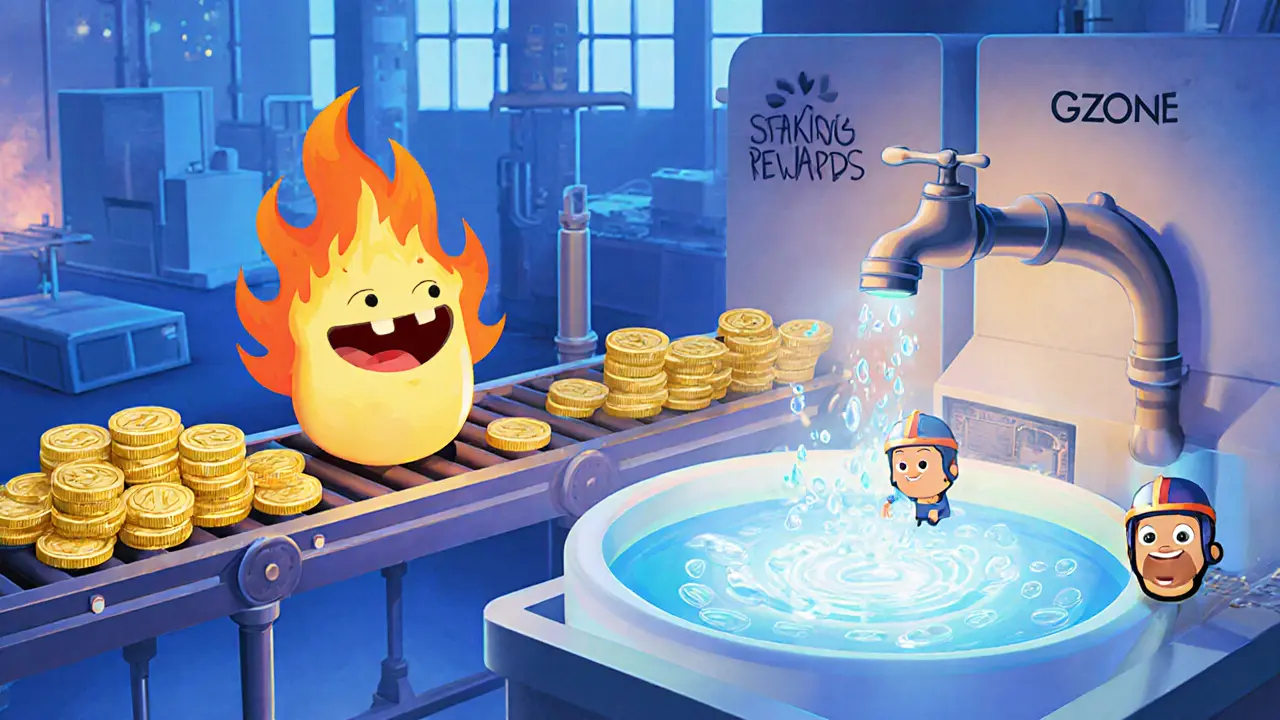
Tier‑Based Allocation: How Staking Translates to Launchpad Access
GameZone’s core value proposition is its tier system. Users lock GZONE tokens in the staking contract and automatically slot into one of four tiers. Higher tiers receive larger pool weights, meaning a bigger slice of coveted IGO allocations. The tiers work like this:
- Tier1 - 0‑10K GZONE staked.
- Tier2 - 10‑50K GZONE.
- Tier3 - 50‑250K GZONE.
- Tier4 - 250K+ GZONE.
Beyond allocation size, higher tiers enjoy lower marketplace fees on the GameZone Marketplace and early‑bird access to partner projects. The system is deliberately designed to democratize entry while still rewarding the most committed holders.
Is There an Airdrop? Understanding Ongoing Reward Distribution
Public records don’t show a one‑time airdrop tied to the IDO, but the token’s fee‑based reward model functions as a continuous airdrop. Every time someone sells GZONE, 5% of the fee lands in the staking pool and is automatically credited to all active stakers. In practice, that means if you lock 10K GZONE for a month, you’ll see a steady inflow of extra tokens proportional to the total sell volume across the network.
GameZone also partners with BlueZilla’s portfolio companies. Occasionally, partner projects distribute bonus tokens exclusively to GZONE stakers, effectively creating ad‑hoc airdrops. Keeping an eye on the official Discord and Telegram channels is the best way to catch these opportunities.
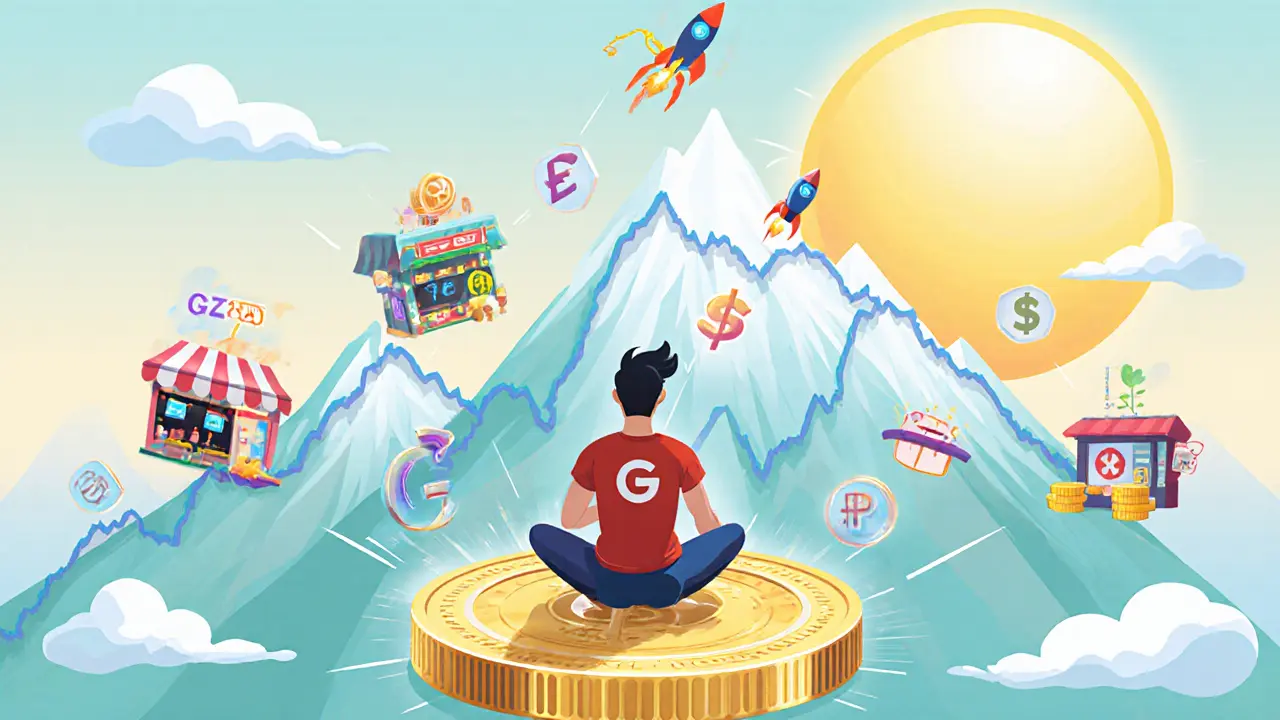
Price Outlook: What the Numbers Say for 2025‑2026
Technical indicators paint a bleak short‑term picture: a 14‑day RSI of 15.56 suggests the token is deeply oversold, while the 50‑day SMA ($0.01206) sits well above the current price. Historically, such divergence can precede a bounce, but market sentiment remains fearful (Fear & Greed Index 26).
Forecasts from independent analysts paint two possible scenarios:
- Optimistic: Average price climbs to $1.43 in 2025, with peaks near $2.50 as GameZone rolls out new GameFi incubations and expands its marketplace.
- Conservative: Price hovers around $0.003-$0.005, reflecting broader crypto market corrections and limited new token utility beyond staking rewards.
Key drivers that could push the token upward include:
- Launch of high‑profile IGOs (e.g., next‑gen Play‑to‑Earn titles).
- New partnerships that grant exclusive token drops to stakers.
- Increasing adoption of the GameZone Marketplace for NFT trading.
If any of these materialize, the deflationary burn could amplify price gains by shrinking supply while demand rises.
How to Maximize Your GZONE Holdings Right Now
Here are three actionable steps you can take today:
- Stake your tokens. Even a modest amount unlocks the continuous reward airdrop and places you in a tier that grants allocation rights.
- Monitor partnership announcements. When BlueZilla or a partner project releases a token‑drop, stakers are usually first in line.
- Consider a short‑term sell‑pause. The early‑unstaking fee can reach 25% if you withdraw within 30days, so plan exits around major market events to avoid needless penalties.
Combining these tactics helps you capture the built‑in rewards while preserving the upside potential if the market turns bullish.
Frequently Asked Questions
Did GameZone run a one‑time airdrop for the IDO?
No dedicated airdrop was announced for the 2021 IDO. Instead, the platform’s fee‑based staking rewards provide a continuous airdrop to all token holders.
How are staking rewards calculated?
Every sell transaction incurs a 7% fee. Five percent of that fee is pooled and distributed proportionally to all stakers each block, based on the amount of GZONE they have locked.
What happens if I unstake early?
An early‑unstaking fee applies, scaling up to 25% if you withdraw within the first month. The fee is burned, adding another deflationary pressure on supply.
Can I earn GZONE without buying the token?
Earned rewards are tied to staking, so you need to hold GZONE first. However, some partner projects occasionally reward non‑stakers with promotional NFTs that can be swapped for GZONE on the marketplace.
What are the main risks of investing in GZONE?
Key risks include overall crypto market volatility, the reliance on successful IGOs for ecosystem growth, and potential regulatory shifts affecting gaming tokens. The token’s price has dropped over 99% from its peak, so a recovery isn’t guaranteed.
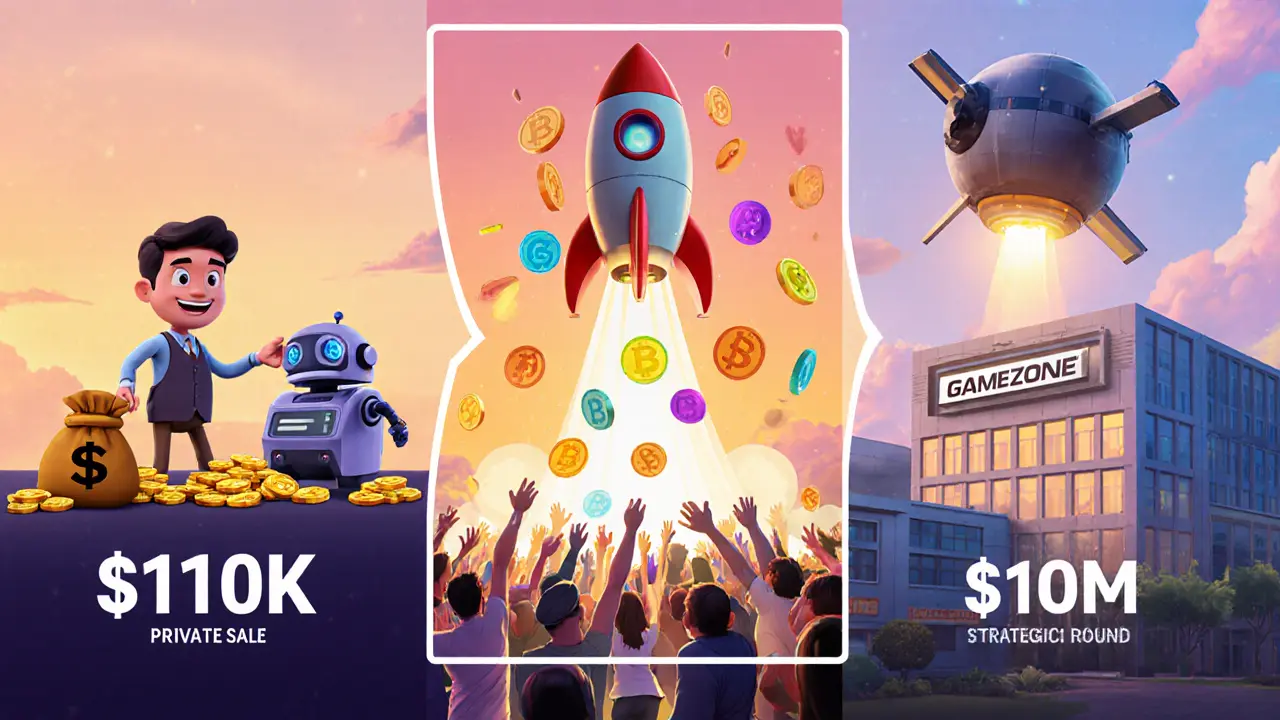
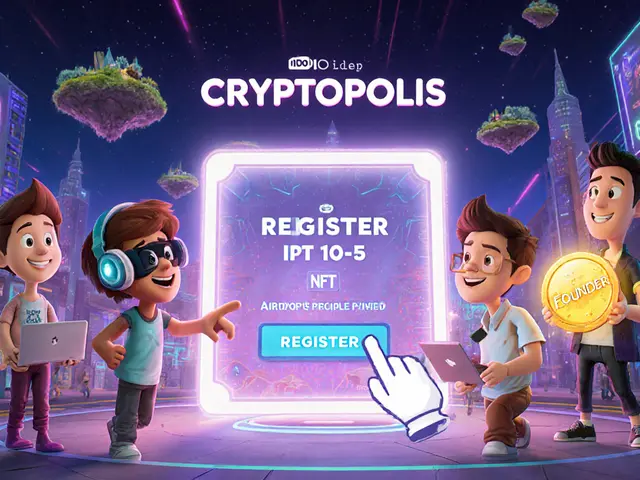
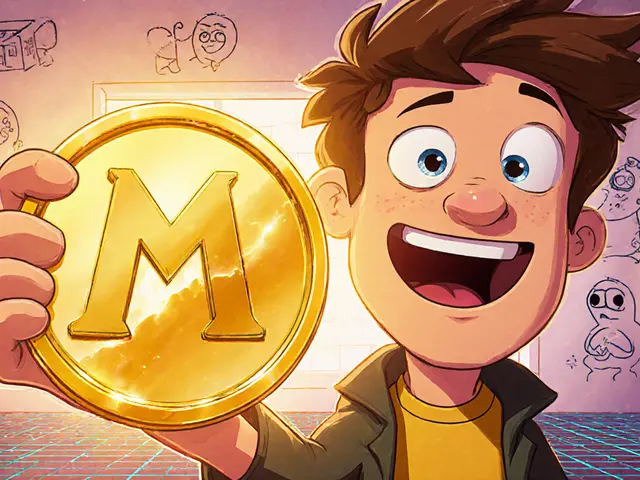
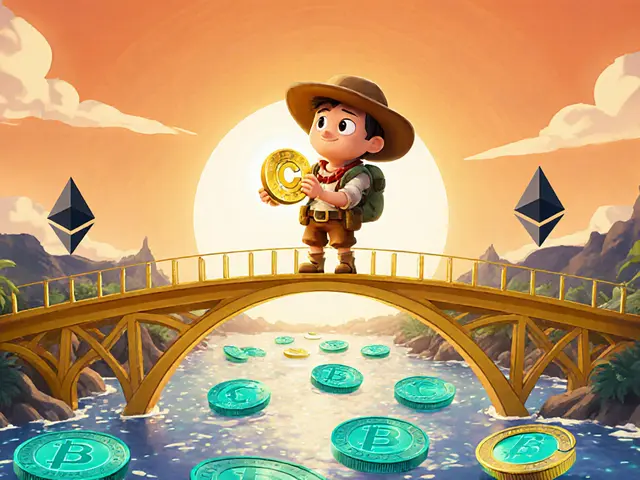
Comments
The 7% sell fee is basically a stealth tax that punishes every trader.
While the whitepaper outlines a commendable deflationary mechanism, one must note that the actual burn rate may not align with the projected supply reduction-perhaps a minor oversight in the documentation.
Staking even a modest amount of GZONE can generate a decent stream of passive income; the rewards are proportional to the overall sell volume, so larger markets benefit you more.
Keep in mind the early‑unstaking penalty can eat into your gains if you act too hastily.
Also, the tier system is straightforward: just hit the next threshold to boost your allocation rights.
Remember to diversify your exposure across multiple launchpads as well.
Finally, stay active on Discord to catch the occasional bonus airdrops.
It is amusing how the community hails this token as the next big thing while the price has collapsed over 99%. One could argue that the perpetual reward model is merely a veil for a Ponzi‑like structure, rewarding only the early birds. Yet, the burn mechanism does add a touch of scarcity that might someday spark a rally.
Don't be fooled by the 'burn' gimmick; it's the same old trap where the devs keep a hidden reserve to dump later.
I think the tier allocation is fairly transparent, but the documentation could benefit from clearer examples-especially for newbies trying to calculate their expected rewards.
The staking calculator is useful but overly simplistic for real‑world scenarios.
Indeed, the on‑chain analytics show that daily sell volume fluctuations can cause reward spikes that the UI doesn't capture.
The GZONE tokenomics present a textbook case of how fee‑based reward systems can masquerade as continuous airdrops.
When a sell order is executed, 5% of the transaction fee is funneled into a pool that is instantly redistributed to all stakers, creating a perception of perpetual profit.
However, this mechanism also introduces a dependency on market activity; if trading dries up, the reward flow halts.
Moreover, the 2% burn component reduces supply, but its impact is marginal unless the token experiences massive sell pressure.
From a macro‑economic standpoint, the dual forces of token burning and reward distribution aim to balance scarcity with incentive.
The tiered allocation system further stratifies participants, granting higher‑volume stakers preferential access to upcoming IGO slots.
This creates a feedback loop where those with more tokens accrue more rewards, reinforcing their dominance.
Critics argue that such a structure exacerbates wealth concentration, effectively sidelining small investors.
Nevertheless, the deflationary element could act as a catalyst for price appreciation if demand outpaces the diminishing supply.
Historical data shows that similar fee‑redistribution models have occasionally spurred short‑term bullish spikes following major sell events.
Conversely, prolonged bearish markets can erode confidence, leading to token abandonment despite the reward incentives.
Investors must therefore assess both the token’s intrinsic utility and the health of the broader gaming ecosystem it supports.
Strategic partnerships with high‑profile game studios could inject fresh liquidity and user interest, bolstering the reward pool.
On the other hand, regulatory scrutiny over gaming tokens may pose unforeseen challenges that could destabilize the platform.
Ultimately, participation in GZONE should be guided by a balanced risk‑reward analysis, recognizing that the apparent airdrop is contingent on sustained market activity.
While the math behind the reward distribution is transparent, the real test lies in the token's utility beyond speculative trading. If GameZone can deliver measurable value through its marketplace and IGO launches, the staking rewards become a legitimate incentive rather than a mere gimmick. Otherwise, they're just a hollow promise.
Looks like another endless reward loop to keep hodlers chained.
Sure, but the loop only works if the underlying projects actually launch and generate real demand.
Staking a little GZONE feels like planting a seed 🌱; you might not see the harvest today, but patience could bring a sweet return 🍯.
Keep an eye on the burn rate-every 2% matters! 🚀